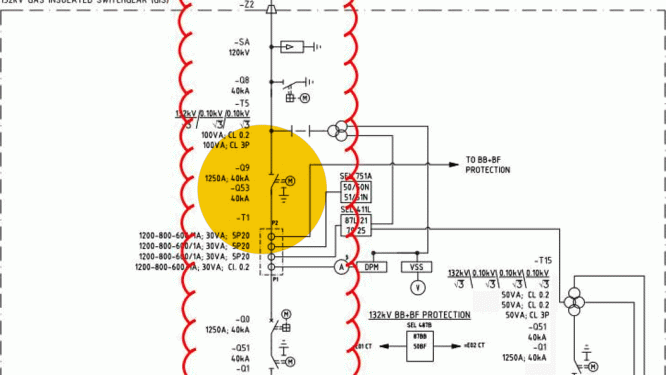Description
In this class, you will learn everything there is to know about power system analysis, beginning with the fundamentals of single phase and three phase electric systems, moving on to the designing and modeling of various power system components like generators, transformers, and transmission lines, and concluding with a complete power system study that includes load flow studies and an analysis of power system faults.
Therefore, you can consider this class to be your comprehensive reference to one of the most important subfields of power engineering: an examination or analysis of the power system.
The course is structured as follows: Firstly, an overview on the power system structure is illustrated through the following topics:
- Generation, transmission, distribution, and consumption of electric power
- How to draw a single line diagram (SLD) of any power system
After that, the following lessons will deal with the fundamental ideas related to electrical engineering, which will serve as a short refresher for you. The following subjects will be discussed in depth:
- Different types of powers in power system
- Complex power, power triangle, and power factor definitions
- Power factor correction
- Complex power flow in any power system
Then, because three phase systems are used in 99 percent of practical electric networks, a comprehensive examination of three phase systems is presented. Thus, three phase circuits are thoroughly covered in the following topics:
- Why we need three phase systems?
- Three phase supply and load
- Different 3-ph connections (star-star), (star-delta), (delta-star), (delta-delta)
- Difference between (3-wire) and (4-wire) 3-ph systems
- The relations between line and phase currents and voltages
- Power analysis in 3-ph systems
- Power factor improvement in 3-ph circuits
The next topic deals with the modeling and characteristics of generators in power systems, beginning with the operation and construction of alternators and progressing to the measurement of synchronous generator performance indices. The following subjects will be discussed:
- Construction and operation of alternators
- Salient pole vs. cylindrical rotor generators
- Generator model in power systems
- Generator phasor diagram and characteristics
- Generator performance parameters
- Power angle curve of synchronous generators
The following topic is about transformers and their applications in power systems. Through the following overview, we will discuss how transformers work and their role in power systems:
- Construction and operation of transformers
- Transformer equivalent circuit
- Tests performed on transformers.
- Transformer efficiency and regulation
- Three-phase transformer types and connections
- Per phase model of three phase transformer
Following that, we will conduct a comprehensive modeling of various types of transmission lines, as well as an assessment of transmission line performance in electric networks, using the following topics:
- Overhead lines vs. Underground cables (UGC)
- Transmission line modelling and performance
- Short, medium, and long line models
- Lossless transmission lines
- Surge impedance loading (SIL)
After modeling and evaluating various power system components, let us move on to the per unit system and learn about the concept and importance of per unit in power system analysis by following the instructions below:
- Concept of per unit
- Per unit calculations
- How to draw per unit reactance diagram
- Change of base
- Numerical examples on practical power systems
Then we will perform a thorough power flow study to determine the electrical parameters for any power system under any operating conditions. The following subjects are addressed.
- Concept and importance of power flow study
- Definitions in power flow analysis
- Types of power system buses
- Formation of Ybus
- Approximate method
- Iterative methods for load flow analysis
- Gauss-Seidal method
- Power flows and losses analysis
- DC power flow method
- Numerical examples on practical power systems
The power systems are then subjected to a comprehensive fault analysis to determine the fault current, bus voltages, and line current during the fault. All of these frameworks are discussed.
- Definition, causes, types, and consequences of electric faults.
- Complete symmetrical fault analysis using thevenin and Zbus
- Symmetrical components and sequence networks
- Complete unsymmetrical fault analysis using thevenin and Zbus
Finally, after completing the power system analysis, the following practical projects are carried out using MATLAB:
- Project 1 – Standalone synchronous Generator.
- Project 2 – Synchronous Generator connected to the grid.
- Project 3 – Simulation of 3-ph transformers
- Project 4 – Transmission line design
- Project 5 – Power flow study in MATLAB
- Project 6 – Fault analysis in MATLAB
Who Is This Course For
- Anyone who wants to learn electric protection and control from scratch
- Electrical Engineering Students
- Electrical Engineering Graduates
- Electrical Engineers who work in the field of substations and switchgear
- Electrical Control Engineers
- Power/Utility Engineers
Requirements
- Passion to learn power system
- The basic electrical principles







Reviews
There are no reviews yet.